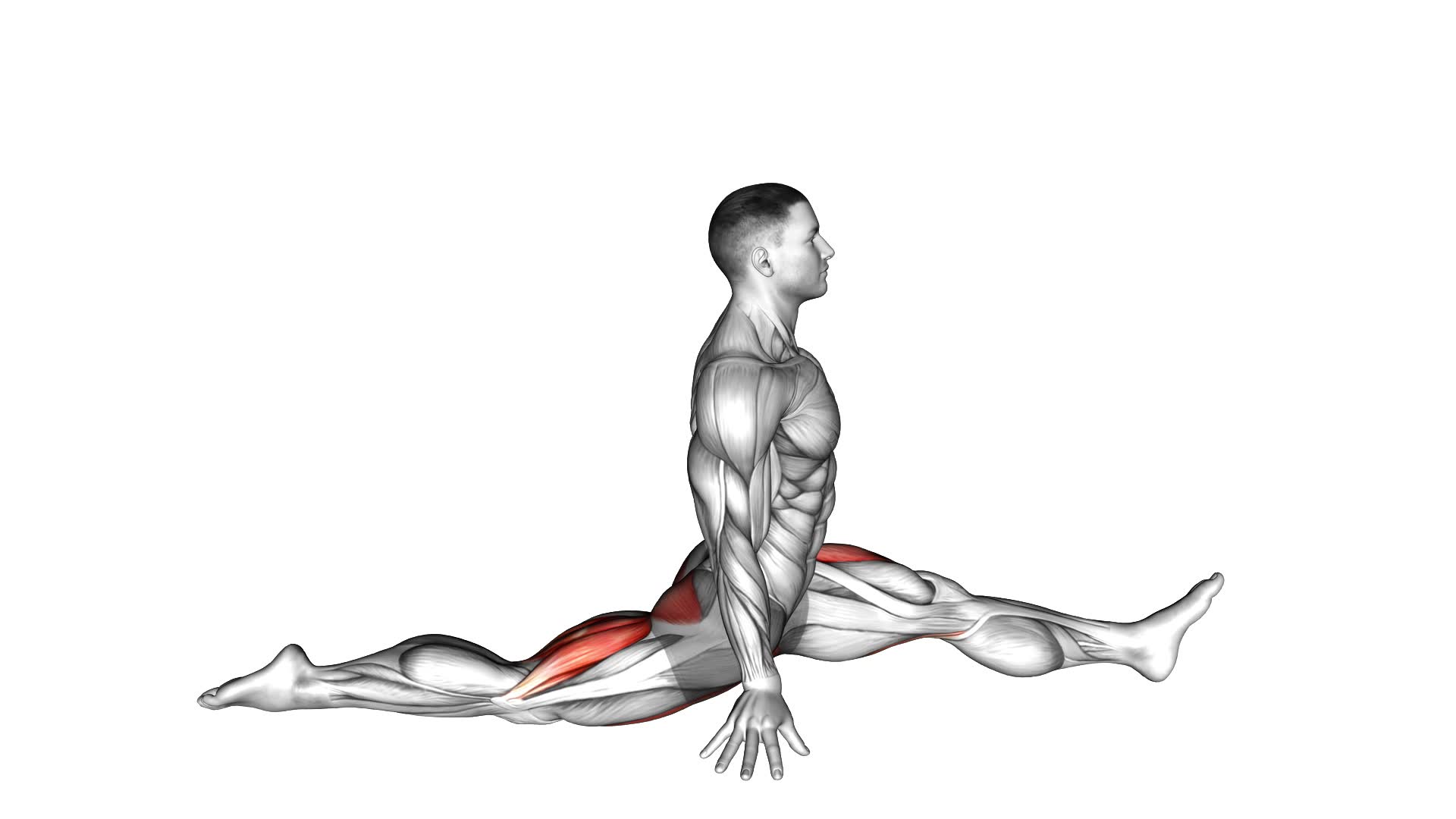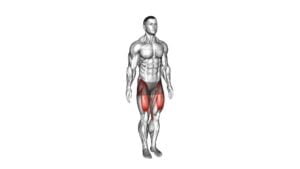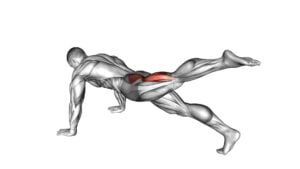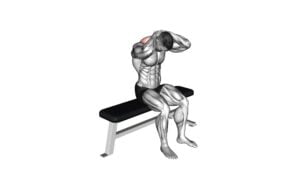Flexion And Extension Hip Stretch (male) – Video Exercise Guide & Tips

Are you looking to improve your hip flexibility and range of motion?
Watch This Exercise Video
In this video exercise guide, we will walk you through the flexion and extension hip stretch specifically designed for men.
With step-by-step instructions and helpful tips, you'll learn the proper form and technique to get the most out of this stretch.
Whether you're a beginner or an experienced fitness enthusiast, this stretch can be modified to suit your fitness level.
Get ready to incorporate this effective hip stretch into your workout routine and experience the benefits.
Key Takeaways
- The flexion and extension hip stretch improves overall hip mobility and increases flexibility in hip muscles and tendons.
- It can help ease discomfort or pain caused by tightness in the hip area.
- The stretch enhances athletic performance, agility, balance, and overall athletic ability.
- Proper form and technique, along with avoiding common mistakes, are crucial for maximizing the benefits and preventing injuries.
Benefits of the Flexion and Extension Hip Stretch
To fully understand the benefits of the Flexion and Extension Hip Stretch, you should first consider how it can improve your overall hip mobility. Hip mobility refers to the range of motion and flexibility in your hip joints. It plays a crucial role in everyday activities such as walking, running, and bending down. Incorporating the Flexion and Extension Hip Stretch into your flexibility training routine can have numerous advantages.
This stretch specifically targets the muscles and tendons around your hip joint, allowing them to lengthen and become more flexible. By regularly performing this exercise, you can increase the range of motion in your hip joints, making movements like squatting and lunging easier and more fluid. Improved hip mobility can also alleviate discomfort or pain caused by tightness in the hip area.
Additionally, the Flexion and Extension Hip Stretch can enhance your athletic performance. Whether you're a professional athlete or a fitness enthusiast, having optimal hip mobility is crucial for efficient movement and injury prevention. By incorporating this stretch into your routine, you can enhance your agility, balance, and overall athletic ability.
Proper Form and Technique for the Stretch
To properly perform the Flexion and Extension Hip Stretch, focus on maintaining a steady and controlled movement throughout the exercise. This won't only help you maximize the stretching benefits but also prevent any potential injuries or common mistakes.
First, start by lying on your back with your legs extended. Bend one knee and bring it towards your chest, holding onto your shin or thigh. Slowly straighten your leg back out until it's parallel to the floor, feeling a stretch in your hip and hamstring. Keep your movements slow and controlled, avoiding any jerking or bouncing motions.
Next, repeat the same movement with your other leg. As you alternate between legs, make sure to maintain proper alignment and posture. Keep your upper body relaxed and your core engaged to support your lower back. Avoid arching your back or lifting your shoulders off the ground.
Remember to breathe deeply and relax into the stretch, allowing your muscles to gradually release tension. If you feel any pain or discomfort, ease off the stretch and adjust your position as needed.
Common Mistakes to Avoid During the Stretch
Avoid making these common mistakes during the Flexion and Extension Hip Stretch to ensure proper form and maximize the benefits of the exercise. By being mindful of these errors, you can improve your stretching techniques and avoid potential injuries. Here are three common mistakes to avoid during the stretch:
- Rushing the stretch: One mistake people often make is rushing through the exercise without properly warming up or taking the time to stretch each leg adequately. Take your time and focus on each leg individually, ensuring that you feel a gentle stretch in the hip flexors and glutes before moving on to the other leg.
- Overarching the lower back: Another common mistake is arching the lower back excessively during the stretch. This can strain the lower back and take away from the effectiveness of the stretch. To avoid this, engage your core muscles and maintain a neutral spine position throughout the exercise.
- Neglecting proper breathing: Breathing is essential during any stretch or exercise. Many people hold their breath or take shallow breaths while performing the Flexion and Extension Hip Stretch. Remember to breathe deeply and rhythmically throughout the stretch, allowing your muscles to relax and promoting better flexibility.
Modifications and Variations for Different Fitness Levels
When it comes to modifying the flexion and extension hip stretch for different fitness levels, there are a few key points to keep in mind.
First, if you're a beginner, you may need to start with simpler modifications, such as using a support or reducing the range of motion.
On the other hand, advanced variations can be incorporated for those who are more experienced and looking for a challenge.
Lastly, it's important to adapt the exercise to your fitness level, whether that means increasing or decreasing intensity, duration, or resistance.
Beginner Modifications
Start with a comfortable seated position on a mat or cushion. As a beginner, it's important to ease into the flexion and extension hip stretch. Here are some modifications and variations to help you get started:
- Use props: Place a bolster or a folded blanket under your hips to provide support and make the stretch more accessible.
- Reduce range of motion: Instead of fully extending your legs, keep them slightly bent to decrease the intensity of the stretch.
- Gradually increase duration: Start with holding the stretch for 10-15 seconds and gradually work your way up to longer durations as you become more comfortable.
Remember to listen to your body and only go as far as feels comfortable. With consistent practice, you'll gradually build strength and flexibility in your hips.
Advanced Variations
To progress the flexion and extension hip stretch, you can incorporate advanced variations that cater to different fitness levels. These advanced modifications are designed to further challenge your hip mobility and flexibility.
One advanced variation is the standing pike stretch, where you stand with your legs straight and hinge forward at the hips, reaching towards your toes. This variation increases the intensity of the stretch and targets the hamstrings and lower back.
Another advanced hip mobility exercise is the single-leg squat to stand. Start by standing on one leg and squat down as low as you can, then return to the starting position. This exercise not only improves hip mobility but also strengthens the muscles around the hip joint.
Incorporating these advanced variations into your routine will help you take your flexibility and hip mobility to the next level.
Fitness Level Adaptations
To progress the flexion and extension hip stretch and cater to different fitness levels, incorporate modifications and variations that challenge your hip mobility and flexibility even further. Here are three fitness modifications to consider:
- Beginner Modification: If you're new to this stretch or have limited hip flexibility, start by performing the stretch with your back against a wall. This will provide additional support and stability as you work on increasing your range of motion.
- Intermediate Variation: To increase the intensity of the stretch, try using a resistance band. Wrap the band around your thighs, just above your knees, and perform the flexion and extension hip stretch. The resistance from the band will add an extra challenge and help strengthen your hip muscles.
- Advanced Modification: For those looking for an advanced variation, you can perform the flexion and extension hip stretch on an unstable surface, such as a balance board or stability ball. This will engage more muscles and improve your balance and stability while stretching.
Tips for Incorporating the Stretch Into Your Workout Routine
To effectively incorporate this stretch into your workout routine, consistently perform it at least three times a week. This will help improve your hip flexibility and mobility over time.
Before starting the stretch, it's important to warm up your body with some light exercises. This could include jogging, jumping jacks, or dynamic stretches like leg swings. Warming up will increase blood flow to your muscles and prepare them for the stretch.
When performing the flexion and extension hip stretch, it's essential to listen to your body and make modifications as needed. If you have any pre-existing injuries or conditions, consult with a healthcare professional before attempting this stretch. They'll be able to provide guidance on modifications that are suitable for your specific needs.
Additionally, it's important to maintain proper form throughout the stretch. Keep your back straight and engage your core muscles to support your spine. Avoid any jerky or sudden movements that could strain your muscles.
Incorporating this stretch into your workout routine can help improve your overall flexibility and prevent injuries. However, it's crucial to take precautions and consider any limitations or restrictions you may have.
In the next section, we'll discuss the precautions and considerations to keep in mind before performing the stretch.
Precautions and Considerations Before Performing the Stretch
Before performing the flexion and extension hip stretch, it's important to understand and implement stretching techniques for safety. This includes gradually increasing the stretch and avoiding any sudden movements or bouncing.
Additionally, it's crucial to consider any pre-existing health conditions that may affect your ability to perform the stretch safely.
Lastly, be sure to properly warm up your body before attempting the stretch to prevent injury and maximize the benefits of the exercise.
Stretching Techniques for Safety
How can you ensure the safety of your stretching routine? Stretching techniques are important for injury prevention during your routine. Here are three key considerations to keep in mind:
- Warm-up: Always start with a warm-up session before stretching. This increases blood flow to your muscles and prepares them for the stretches ahead. Engage in light cardiovascular exercises like jogging or jumping jacks for 5-10 minutes.
- Proper form: It's crucial to maintain proper form during stretches to avoid injury. Pay attention to your body alignment and ensure that you aren't pushing yourself too far beyond your limits. Start with gentle stretches and gradually increase the intensity over time.
- Gradual progression: Avoid sudden and forceful movements while stretching. Instead, focus on gradually increasing the range of motion. Start with easier stretches and progress to more challenging ones as your flexibility improves.
Health Conditions to Consider
As you continue your stretching routine, it's important to consider any health conditions that may require precautions and additional considerations. While stretching can have numerous benefits, it's essential to be aware of potential health risks and contraindications that may affect your ability to perform certain exercises safely.
First and foremost, if you have any pre-existing medical conditions, it's crucial to consult with your healthcare provider before attempting any new stretching techniques. Certain health conditions such as arthritis, osteoporosis, or herniated discs may require modifications or even exclusion of specific stretches to prevent further injury or discomfort.
Additionally, if you're experiencing any acute or chronic pain in the hip or surrounding areas, it's advisable to avoid stretching until the underlying cause of the pain has been diagnosed and treated. Stretching without addressing the root cause may exacerbate the issue and lead to further complications.
By considering your individual health conditions and any contraindications, you can ensure a safe and effective stretching routine that promotes flexibility and mobility while minimizing the risk of injury.
Now that you're aware of the importance of health considerations, let's move on to the subsequent section about proper warm-up exercises to further enhance your stretching routine.
Proper Warm-Up Exercises
To ensure a safe and effective stretching routine, it's important to properly warm up your body before performing the flexion and extension hip stretch. A warm-up routine prepares your muscles, joints, and cardiovascular system for exercise, reducing the risk of injury.
Here are three key considerations for your warm-up:
- Start with light cardio: Begin your warm-up with five to ten minutes of low-impact cardio exercises such as brisk walking, jogging, or cycling. This increases your heart rate and blood flow, warming up your muscles.
- Incorporate dynamic stretching: Dynamic stretches involve moving parts of your body through a full range of motion. Include exercises like leg swings, hip circles, and arm circles to warm up your muscles and joints.
- Gradually increase intensity: As you warm up, gradually increase the intensity of your exercises. This helps to gradually raise your heart rate and body temperature, preparing you for the flexion and extension hip stretch.
Frequently Asked Questions
Can This Hip Stretch Help With Lower Back Pain?
Stretching your hips can be beneficial for relieving lower back pain. Hip mobility exercises, like the flexion and extension hip stretch, can help alleviate tension in the lower back by improving flexibility and range of motion.
Stretching is important for back pain relief as it helps to release tight muscles and improve circulation. Incorporating hip stretches into your routine can assist in reducing discomfort and promoting overall back health.
How Long Should I Hold the Stretch for Maximum Benefit?
To maximize the benefits of dynamic stretching and vary your hip stretches, it's important to hold the stretch for an adequate duration. The length of time you should hold a stretch can vary depending on your individual needs and comfort level.
Generally, holding a stretch for about 20-30 seconds is recommended. This allows your muscles to relax and lengthen, increasing flexibility and reducing the risk of injury.
Remember to listen to your body and adjust accordingly.
Can I Perform This Stretch if I Have a Hip Injury?
If you have a hip injury, it's important to take precautions when performing this stretch. Consult with a healthcare professional or physical therapist to determine if it's safe for you.
There may be alternative hip stretches that are more suitable for your condition. Always prioritize your safety and listen to your body's signals.
It's better to modify or avoid certain exercises to prevent further injury or discomfort.
Is It Necessary to Warm up Before Doing This Stretch?
Before performing any stretch, it's important to properly warm up your muscles. This helps increase blood flow and flexibility, reducing the risk of injury.
Different fitness levels require different stretching techniques. Beginners should start with gentle stretches and gradually increase intensity. Intermediate and advanced individuals can perform more challenging stretches to improve flexibility.
Always listen to your body and stop if you feel any pain.
Can This Stretch Improve Flexibility for Other Lower Body Exercises, Such as Squats or Lunges?
Improving your flexibility with this stretch can definitely enhance your performance in lower body exercises like squats and lunges. By increasing the range of motion in your hips, you'll be able to achieve deeper squats and lunges, which in turn can lead to greater muscle activation and strength gains.
Additionally, having flexible hip muscles can help prevent injuries by reducing the strain on your joints and supporting proper alignment during these exercises.
Conclusion
Incorporating the flexion and extension hip stretch into your workout routine can provide numerous benefits, including improved flexibility and mobility in the hip joint. By following proper form and technique, avoiding common mistakes, and considering modifications for different fitness levels, you can safely and effectively perform this stretch.
Remember to consult with a healthcare professional before starting any new exercise routine, especially if you have any pre-existing conditions or injuries.

Author
Years ago, the spark of my life’s passion ignited in my mind the moment I stepped into the local gym for the first time. The inaugural bead of perspiration, the initial endeavor, the very first surge of endorphins, and a sense of pride that washed over me post-workout marked the beginning of my deep-seated interest in strength sports, fitness, and sports nutrition. This very curiosity blossomed rapidly into a profound fascination, propelling me to earn a Master’s degree in Physical Education from the Academy of Physical Education in Krakow, followed by a Sports Manager diploma from the Jagiellonian University. My journey of growth led me to gain more specialized qualifications, such as being a certified personal trainer with a focus on sports dietetics, a lifeguard, and an instructor for wellness and corrective gymnastics. Theoretical knowledge paired seamlessly with practical experience, reinforcing my belief that the transformation of individuals under my guidance was also a reflection of my personal growth. This belief holds true even today. Each day, I strive to push the boundaries and explore new realms. These realms gently elevate me to greater heights. The unique combination of passion for my field and the continuous quest for growth fuels my drive to break new ground.







